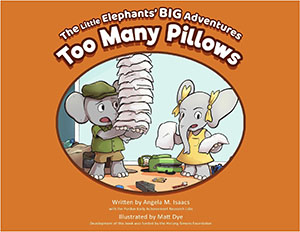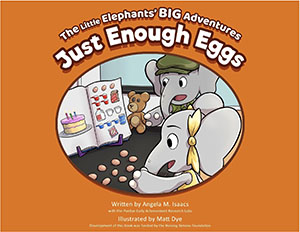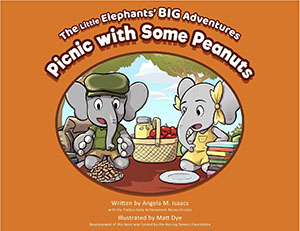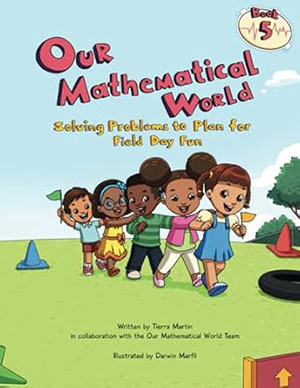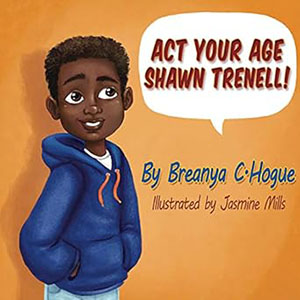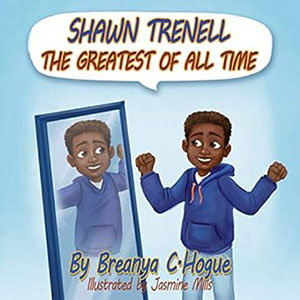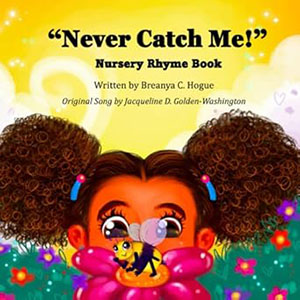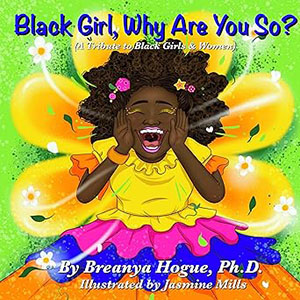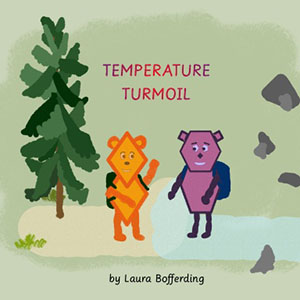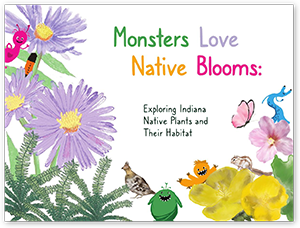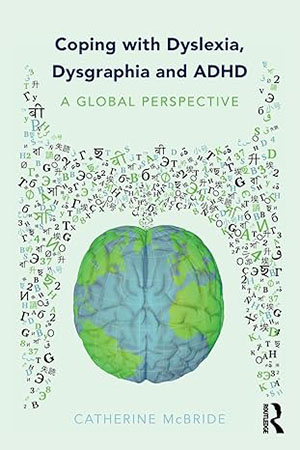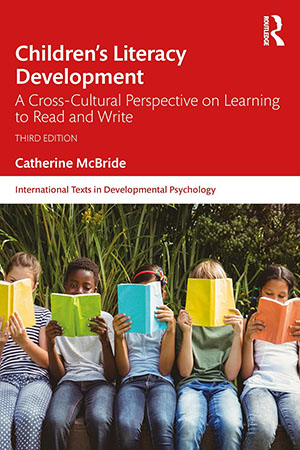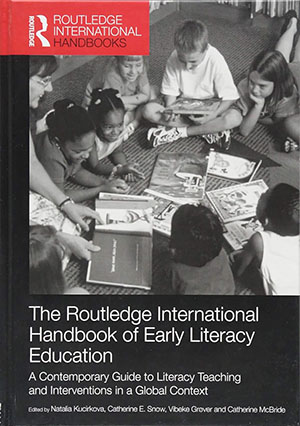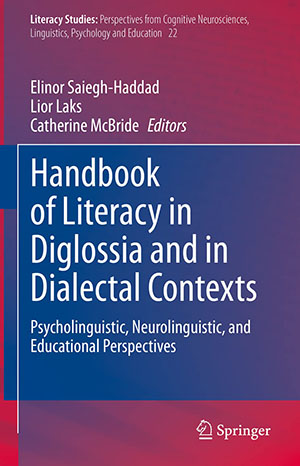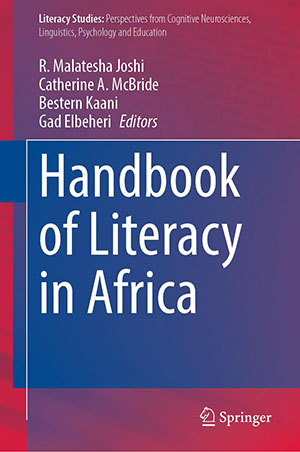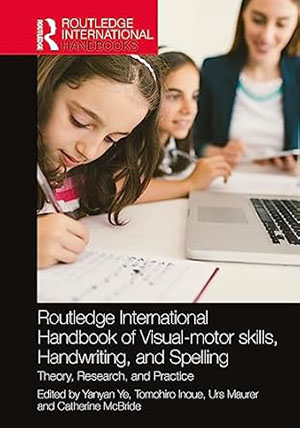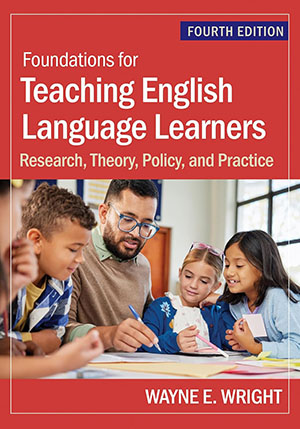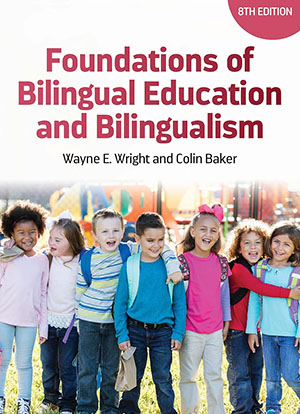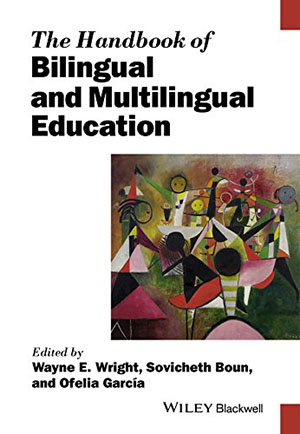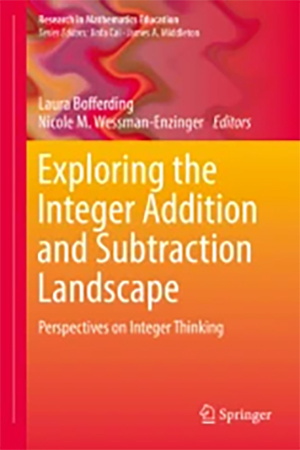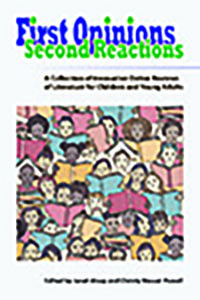BOOKS
These books are written or developed by Center for Early Learning faculty affiliates.
CEL Faculty affiliates can request their books to be added to this site by clicking HERE.
Also find our E-Publications HERE.
PICTURE BOOKS
Jump to: Literacy & Language
Jump to: Mathematics
Jump to: Children’s Literature
TOO MANY PILLOWS
Join Lucy, Benjamin, and Bear on their math adventure with a camping trip! Benjamin has so many things in his backpack that – CRASH – he falls down! They’ll have to work together to lighten both his pack and his worries in this picture book about everyday math and facing your fears!
JUST ENOUGH EGGS
Join Lucy, Benjamin, and Bear when Lucy makes a cake for Bear’s birthday! But when Lucy’s cake falls flat, and the party will be a flop unless they can bake a just-right cake in this book about everyday math and perseverance.
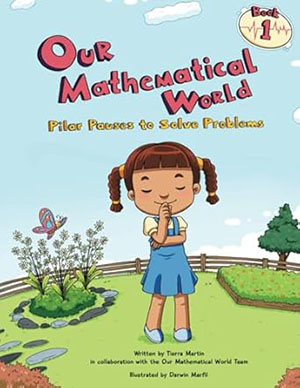
PILAR PAUSES TO SOLVE PROBLEMS
Follow along with Pilar, Uriah, Lamar, Simone, and Eduardo as they showcase the PULSE approach to solve the math problems they encounter in this book. The PULSE problem-solving approach stands for: Pause, Understand and Remember, Lay it out, Solve, and Evaluate. (5-18 years)
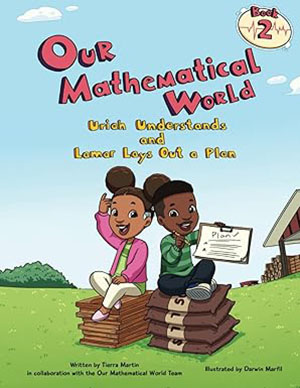
URIAH UNDERSTANDS AND LAMAR LAYS OUT A PLAN
Follow along with Pilar, Uriah, Lamar, Simone, and Eduardo as they showcase the PULSE approach to solve the math problems they encounter in this book. The PULSE problem-solving approach stands for: Pause, Understand and Remember, Lay it out, Solve, and Evaluate. (5-18 years)
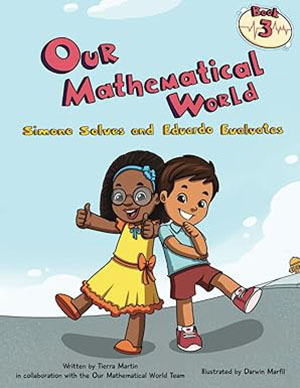
SIMONE SOLVES AND EDUARDO EVALUATES
Follow along with Pilar, Uriah, Lamar, Simone, and Eduardo as they showcase the PULSE approach to solve the math problems they encounter in this book. The PULSE problem-solving approach stands for: Pause, Understand and Remember, Lay it out, Solve, and Evaluate. (5-18 years)
PROBLEM SOLVING WITH SWEET TREATS
Follow along with Pilar, Uriah, Lamar, Simone, and Eduardo as they showcase the PULSE approach to solve the math problems they encounter in this book. The PULSE problem-solving approach stands for: Pause, Understand and Remember, Lay it out, Solve, and Evaluate. (5-18 years)
SOLVING PROBLEMS TO PLAN FOR FIELD DAY FUN
Follow along with Pilar, Uriah, Lamar, Simone, and Eduardo as they showcase the PULSE approach to solve the math problems they encounter in this book. The PULSE problem-solving approach stands for: Pause, Understand and Remember, Lay it out, Solve, and Evaluate. (5-18 years)

BIRTHDAY BEEPS AND BOOPS
The first book in The Pattern Pals series begins as Zoe the Parrot sets up a surprise party. Her best friend, Clara the Chameleon, worries that Zoe is acting strange – whose birthday is Zoe celebrating, anyway? Together, they use the secret birthday girl’s favorite colors to decorate the party in different patterns before the big reveal. This book enriches the familiar setting of birthday parties with beautiful colors and patterns. Not only is it a fun and intriguing mystery, but the book has been designed to help young children learn simple patterning skills in an enjoyable way. Questions are built into each page to help adults expand on the conversation and introduce early math concept to children.

SLEEPOVER SIMILARITIES
In the second book of The Pattern Pals series, Zoe the Parrot goes to Clara the Chameleon’s house for her first sleepover. They’re both excited for this new adventure, but Zoe misses her own home. Fortunately, through the power of patterns and imagination, Clara reveals how similar their houses really are! This book shows children that some unfamiliar situations can be fun and help them grow. Not only is it a hopeful story about friendship, but the book has been designed to help young children learn early patterning skills. It shows that things using different colors or shapes can still have the same pattern, building off lessons taught in Birthday Beeps and Boops, the first book in the series. Sleepover Similarities also has questions built onto each page to help adults expand on the conversation and introduce early math concepts to children.
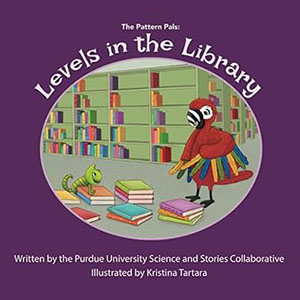
LEVELS IN THE LIBRARY
In the third book of The Pattern Pals series, Clara the Chameleon and her best friend, Zoe the Parrot, go to the library. Clara shows Zoe all the different things they can do in the library, but Zoe is having a hard time being quiet! Through a series of bumps and tumbles with books and blocks, Clara and Zoe explore the shelves and build growing patterns. This book connects to children through the experience of going to a library for the first time. Not only is it a funny story about making mistakes and being yourself, but the book has been designed to help young children learn about growing patterns. It shows that similar increases or decreases across sets of images or objects can be patterns, building off lessons taught in Birthday Beeps and Boops and Sleepover Similarities. Levels in the Library also has questions built into each page to help adults expand on the conversation and introduce early math concepts to children.
ACT YOUR AGE SHAWN TRENELL!
Ten year old Shawn Trenell is having a difficult time with understanding exactly what the phrase every adult keeps uttering to him, “Act Your Age” means. Aren’t ten year olds supposed to have fun and joke around all of the time? Why was everyone on his case all of a sudden? Read more to experience a typical day in Shawn’s shoes. Along with the adventure, discover the lesson he learns about growing up and what his mom realizes about having patience.
SHAWN TRENELL THE GREATEST OF ALL TIME
Shawn returns! This time around he needs a slice of humble pie. He knows he’s the fastest, strongest and the brightest and doesn’t miss the opportunity to rub it in his peers’ faces. After getting overlooked, Shawn learns a valuable lesson about humility and teamwork.
NEVER CATCH ME!
“Never Catch Me!” is an original song that author, Breanya Hogue’s mother, Jacqueline made up when she was a child and repeatedly sang to both she and her sister. When Breanya grew to become an educator and children’s book author (Shawn Trenell Book Series) she developed the idea to publish her mother’s song after she overheard her singing the familiar tune to the family’s special little friend, DaNiah, (who Jacqueline had baby sat over the years). The original insect in the tune was actually a flea, but Breanya felt that a bee would be more fun and relatable for young readers. We hope that you and your little ones enjoy “Never Catch Me!” and just like our family, it becomes one of your favorite nursery rhymes.
SHAWN TRENELL THE GREATEST OF ALL TIME
Black Girl, Why Are You So? was originally written as a poem by author, Breanya Hogue and featured as one of five selections in Black Lit 2022 at Indiana University. The literary event was established to commemorate the art of Black writers and orators. After performing the original poem, Breanya received a standing ovation and following the event several people recommended that she develop a book related to the poem. The poem was inspired by Breanya’s upbringing, specifically her late mother who modeled the importance of self-confidence, pride, and self-expression. Breanya and her sister grew up exuding these qualities and she instilled them with all the youth that she came into contact with. May this book inspire all young readers to embrace their gifts and shine bright for the world to see!
TEMPERATURE TURMOIL
Hot. Cold. More. Less. Higher. Lower. Positive. Negative. Incompatible opposites? Or friends with new viewpoints? Follow Ilana Icy and Curt Cozy as they sort through temperature turmoil!
MONSTERS LOVE NATIVE BLOOMS: EXPLORING INDIANA NATIVE PLANTS AND THEIR HABITAT
This 22-page children’s book by Purdue University students helps young readers learn about 12 plants native to Indiana, focusing on where they live and thrive (prairie, forest, forest edge, water edge) and the role of landscape architects and horticulturists.
LITERACY & LANGUAGE
Jump to: Picture Books
Jump to: Mathematics
Jump to: Children’s Literature
COPING WITH DYSLEXIA, DYSGRAPHIA AND ADHD: A GLOBAL PERSPECTIVE
Coping with Dyslexia, Dysgraphia and ADHD: A Global Perspective is targeted to teachers, parents, practitioners, and individuals with these disabilities. It summarizes research in each of these areas separately and together, offers advice on ways to help, and includes interviews with individuals from 6 continents on the topic. The appendices include tips to help, ways to assess and train cognitive-linguistic skills in different languages, free computer games and apps that help train reading, and movies and YouTube videos that illustrate dyslexia and other related learning disabilities around the world.
CHILDREN’S LITERACY DEVELOPMENT: A CROSS-CULTURAL PERSPECTIVE ON LEARNING TO READ AND WRITE (3rd edition)
In the updated third edition of this unique book, Catherine McBride broadly explores the science of reading and examines how the languages we know help structure the process of becoming literate. Taking an ecological and distinctively cross-cultural perspective, the book looks at reading and writing development and impairment across a range of languages, scripts, and contexts. This new edition highlights multiliteracy and multilingualism and includes a chapter on the impact of digital technology on children’s literacy development.
THE ROUTLEDGE INTERNATIONAL HANDBOOK OF EARLY LITERACY EDUCATION: A CONTEMPORARY GUIDE TO LITERACY TEACHING AND INTERVENTIONS IN A GLOBAL CONTEXT
The Routledge International Handbook of Early Literacy Education offers a pioneering overview of early literacy provision in different parts of the world and brings together interdisciplinary research evidence on effective literacy teaching to inform current and future practice and policy of early literacy. From the problem of identification of literacy difficulties in a particular learning context to supporting the provision of early literacy through digital media, the handbook deals with the major concerns and newest areas of interest in literacy research. With an international and future vision, it provides an accessible guide to the main debates and future trends in the global field of early literacy, and informs academics, policy-makers, practitioners, educators and students about innovative early literacy research methods and instruction.
HANDBOOK OF LITERACY IN AKSHARA ORTHOGRAPHY
This volume examines the unique characteristics of akshara orthography and how they may affect literacy development and problems along with the implications for assessment and instruction. Even though akshara orthography is used by more than a billion people, there is an urgent need for a systematic attempt to bring the features, research findings, and future directions of akshara together in a coherent volume. We hope that this volume will bridge that gap.
HANDBOOK OF LITERACY IN DIGLOSSIA AND IN DIALECTAL CONTEXTS
Coping with Dyslexia, Dysgraphia and ADHD: A Global Perspective is targeted to teachers, parents, practitioners, and individuals with these disabilities. It summarizes research in each of these areas separately and together, offers advice on ways to help, and includes interviews with individuals from 6 continents on the topic. The appendices include tips to help, ways to assess and train cognitive-linguistic skills in different languages, free computer games and apps that help train reading, and movies and YouTube videos that illustrate dyslexia and other related learning disabilities around the world.
HANDBOOK OF LITERACY IN AFRICA
This volume highlights the shortcomings concerning literacy development in Africa and collates the current available literature based on empirical research in various countries in a coherent manner. Further emphasized is how the current research can guide practical information to improve the literacy situation in Africa. The research studies will encompass various fields such as linguistics, neurosciences, and education and will provide future research directions and instructional recommendations to improve the literacy situation in Africa.
THE ROUTLEDGE INTERNATIONAL HANDBOOK OF VISUAL-MOTOR SKILLS, HANDWRITING, AND SPELLING
The Routledge International Handbook of Visual-motor skills, Handwriting, and Spelling explores the potentially controversial field of early literacy education. It aims to offer scholars and practitioners an analysis of how and why handwriting skills benefit early literacy learning, especially spelling acquisition, and how this can enrich experiences for children and educators.
READING DEVELOPMENT IN CHINESE CHILDREN
This text reviews both similarities and unique cultural, linguistic, and script differences of Chinese relative to alphabetic reading, and even across Chinese regions. Chinese reading acquisition relies upon children’s strongly developing analytic skills, as highlighted here. These 16 chapters present state-of-the-art research on diverse aspects of Chinese children’s reading development.
FOUNDATIONS FOR TEACHING ENGLISH LANGUAGE LEARNERS: RESEARCH, THEORY, POLICY, AND PRACTICE
Prepare the next generation of educators to effectively teach multilingual students classified as English language learners (ELLs) with this comprehensive fourth edition of a cornerstone text. Written by one of today’s leading authors and researchers on ELL and bilingual education, this is the authoritative textbook for getting K-12 teachers and administrators ready to meet state competency requirements and help their multilingual students thrive. Designed for foundations courses in both undergraduate and graduate programs, this core text has been fully updated with the latest research, theory, policies, key topics, and recommended practices. Future educators will learn how to integrate ELL-classified students into their classes, use students’ home languages as resources for learning, plan rigorous standards-aligned languages and literacy instruction, make research-based decisions, differentiate core content-area instruction, and make effective use of new technologies. Ideal for use as a textbook and a key professional reference, this book will help educators create linguistically and culturally responsive classrooms and schools that set ELL-classified students up for success.
FOUNDATIONS OF BILINGUAL EDUCATION AND BILINGUALISM
The eighth edition of this bestselling textbook has been revised and updated to provide a comprehensive and accessible introduction to bilingualism and bilingual education in an everchanging world. Written in a compact and clear style, the book covers all the crucial issues in bilingualism and multilingualism at individual, group and societal levels.
THE HANDBOOK OF BILINGUAL AND MULTILINGUAL EDUCATION
The Handbook of Bilingual and Multilingual Education presents the first comprehensive international reference work of the latest policies, practices, and theories related to the dynamic interdisciplinary field of bilingual and multilingual education. Represents the first comprehensive reference work that covers bilingual, multilingual, and multicultural educational policies and practices around the world. Features contributions from 78 established and emerging international scholars. Offers extensive coverage in sixteen chapters of language and education issues in specific and diverse regional/geographic contexts, including South Africa, Mexico, Latvia, Cambodia, Japan, and Texas. Covers pedagogical issues such as language assessment as well as offering evolving perspectives on the needs of specific learner populations, such as ELLs, learners with language impairments, and bilingual education outside of the classroom.
LANGUAGE DIVERSITY, POLICY AND SOCIAL JUSTICE: IN HONOR OF TERRENCE G. WILEY
This book honors the impactful work of Terrence G. Wiley on advancing social justice in the areas of language diversity and language policy. It brings together a group of experienced scholars to provide an overview of research and progress in three areas: heritage and community language education, ideologies of language and literacies, and language policy. The chapters cover a wide range of formal and informal learning spaces and address language policies and practices from the national to the local levels. The international appeal of Wiley’s work is represented through the rich diversity of the contributing scholars and research contexts. With an emphasis on advancing scholarship and advocacy for language minoritized populations in the United States and around the world, this book will be of interest to graduate students and researchers in the fields of language education, language policy and sociolinguistics.
MATHEMATICS
Jump to: Picture Books
Jump to: Literacy & Language
Jump to: Children’s Literature
EXPLORING THE INTEGER ADDITION AND SUBTRACTION LANDSCAPE: PERSPECTIVES ON INTEGER THINKING
This book brings together recent work from researchers to illuminate the state of our understanding about issues related to integer addition and subtraction with a goal of highlighting how the variety of perspectives support each other or contribute to the field in unique ways. In particular, it focuses on three main areas of integer work: students’ thinking, models and metaphors, and teachers’ thinking. Each chapter highlights a theoretically guided study centered on integer addition and subtraction. Internationally known scholars help connect the perspectives and offer additional insights through section commentaries. This book is an invaluable resource to those who are interested in mathematics education and numerical thinking.
CHILDREN’S LITERATURE
Jump to: Picture Books
Jump to: Literacy & Language
Jump to: Mathematics
FIRST OPINIONS, SECOND REACTIONS: A COLLECTION OF INNOVATIVE ONLINE REVIEWS OF LITERATURE FOR CHILDREN AND YOUNG ADULTS
This book has over 16 years of reviews of children’s and young adult literature under several themes, including (1) social and political issues, (2) diversity and inclusion, (3) identification and empathy, and (4) genre study.
